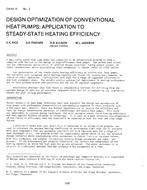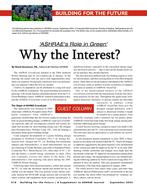Click here to purchase
From hot summer to freezing winter, most of the places on earth suffer from extreme weather. However, temperature at several meters below earth’s surface keeps relatively stable ranging from 7°C (45°F) to 21°C (75°F). Therefore, in comparison with air temperature, soil temperature is warmer in winter and cooler in summer. For the sake of taking advantage by exchanging heat with underground soil efficiently, a computer-simulation based ground-source heat pump (GSHP) system is designed in Transient System Simulation Tool (TRNSYS). Both cooling and heating performances of the system have been studied for a 200m2 (2150 ft2) residential house located in Birmingham, AL and New York City, NY with fixed loads. Hybrid system using different assisted components is a better choice which is presented as a liquid dry cooler in this design. Core parts of this system are a water source heat pump (WSHP) linked to a parallel flow horizontal ground loop, and a dry liquid cooler. Horizontal ground loop is generally better choice for most of residential house where there is sufficient land to use. Due to shallower excavation, horizontal ground loop is generally buried at 3m (9.8ft) underground. As an alternative heat exchanger in this system, liquid dry cooler utilizes air as a secondary fluid which can avoid problem of incrustation formation. A new component (TYPE) is implemented by coding in C++ programming language to improve system model structure. The new Type serves as a functional diverter in this system. The simulation runs for a full calendar year (simulation time) to generate important system performance data such as COP, heat pump power use, as a function of pipe loop characteristics. The results are promising for both climate zones that are investigated.
Citation: 2019 Annual Conference, Kansas City, MO, Extended Abstracts
Product Details
- Published:
- 2019
- Number of Pages:
- 3
- Units of Measure:
- Dual
- File Size:
- 1 file , 470 KB
- Product Code(s):
- D-KC-19-A036


